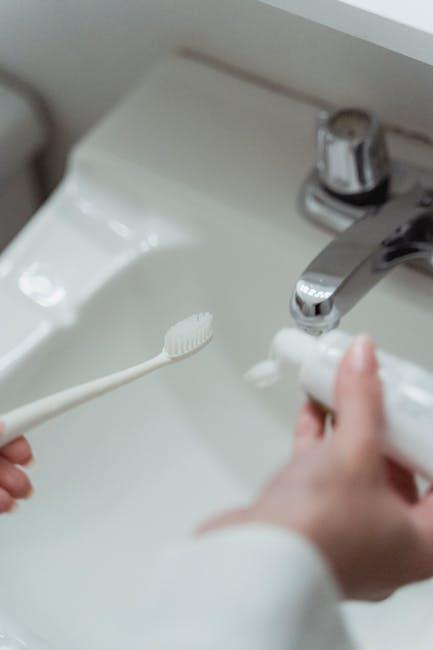FDA Seeks to Remove Ingestible Fluoride Products for Kids’ Teeth from the Market – CBS News
In a recent and impactful move, the U.S. Food and Drug Administration (FDA) has announced its intent to remove ingestible fluoride products designed for children from the market. This decision, fueled by growing health concerns and scientific evidence, is set to reshape how parents and caregivers approach dental health for children. In this comprehensive article, we’ll explore what this FDA action entails, the implications for children’s dental care, and practical tips to maintain healthy smiles without risking unnecessary fluoride exposure.
Why Is the FDA Targeting Ingestible Fluoride Products for Kids?
The FDA’s move follows years of scientific review and public health evaluations that question the safety and efficacy of ingestible fluoride supplements for young children. Traditionally, fluoride has been widely recognized for its cavity-preventive benefits, but recent evidence suggests that excessive ingestion during key developmental stages may pose risks.
- Fluoride Toxicity and Overexposure: Young children are particularly vulnerable to dental fluorosis (discoloration and defects in tooth enamel) caused by too much fluoride intake.
- Questionable Efficacy of Supplements: Alternative fluoride applications such as topical varnishes and fluoridated water supplies have proven safer and just as effective.
- Shift in Public Health Policy: Many communities now provide optimal fluoride levels through water fluoridation, reducing the need for additional vitamin-like fluoride pills or drops.
Current FDA Statement on Ingestible Fluoride Products
According to the recent CBS News report, the FDA is labeling certain fluoride supplements — particularly those ingestible fluoride drops and tablets marketed for children — as potentially unsafe. These products, often prescribed by pediatricians and dentists in the past to prevent cavities, may soon be withdrawn because their risk outweighs the benefits.
Understanding Fluoride and Children’s Dental Health
Fluoride, a mineral found naturally in water, soil, and various foods, strengthens tooth enamel and helps prevent cavities. However, the method and amount of fluoride delivery are crucial, especially for children under the age of 6.
| Fluoride Product Type | Typical Use | Safety Considerations for Kids |
|---|---|---|
| Ingestible Fluoride Supplements (Drops/Tablets) | Prescribed to children in low-fluoride areas | Risk of overexposure, dental fluorosis, toxicity if overdosed |
| Topical Fluoride (Toothpaste, Mouth Rinse, Varnishes) | Applied during daily brushing or dental visits | Safe when used as directed, less systemic risk |
| Fluoridated Community Water | Natural or added fluoride in municipal water | Safe, controlled levels, main cavity prevention measure |
Benefits of Fluoride for Kids’ Teeth – What Remains Unchanged
This FDA announcement should not cause panic among parents regarding fluoride completely — fluoride remains a proven protector against childhood tooth decay when used properly. The key is avoiding excessive ingestion rather than eliminating fluoride altogether.
- Fluoride toothpaste: Brushing twice daily with a pea-sized amount of fluoride toothpaste is still highly recommended.
- Professional topical treatments: Dentists may continue to offer fluoride varnishes during check-ups which apply fluoride only to the teeth’s surface.
- Community water fluoridation: Safe levels of fluoride in drinking water remain a cornerstone of public dental health.
Practical Tips for Parents to Protect Kids’ Teeth Safely
With the FDA’s barring of ingestible fluoride supplements, parents should adopt safer fluoride practices to keep their kids’ smiles bright and healthy:
- Use Fluoride Toothpaste Correctly: For children under 3, use only a smear or rice-grain size amount of toothpaste. For kids 3-6, a pea-sized amount is ideal. Supervise brushing to minimize swallowing.
- Avoid Fluoride Tablets or Drops: If you live in an area with fluoridated water, these supplements are unnecessary and potentially harmful.
- Get Water Tested: Know your community water fluoride levels; consult with your pediatrician or local water authority.
- Regular Dental Visits: Schedule routine dental check-ups, during which fluoride varnishes and preventive advice can be safely administered.
- Educate Kids on Spitting Out Toothpaste: Teaching proper brushing habits early reduces fluoride ingestion risks.
Case Study: Impact of Ingestible Fluoride Supplements in Different Communities
Research examining communities before and after discontinuing fluoride tablets gives insight into the FDA’s decision-making process.
| Community | Fluoride Source | Dental Fluorosis Rate | Tooth Decay Prevalence | Key Observation |
|---|---|---|---|---|
| Urban with fluoridated water | Water + Fluoride tablets | 18% | 15% | Higher fluorosis rates with tablet use |
| Same community post-FDA ruling | Water only | 7% | 16% | Fluorosis declined, decay stable |
| Rural without fluoridated water | Fluoride tablets only | 10% | 25% | Higher cavity rates and risk of fluorosis |
What Parents Should Know: First-Hand Experience Highlights
Sarah, a mother of two young children, shares her perspective:
“When I first heard about fluoride tablets, I gave them to my kids because I thought more fluoride meant better teeth. After learning about the FDA’s concerns, I stopped immediately and switched to only fluoride toothpaste and regular dentist visits. Not only am I less worried about fluoride toxicity, but my kids’ dental visits have been healthy and cavity-free!”
This real-life example demonstrates the importance of informed choices and being aware of current recommendations.
Conclusion
The FDA’s initiative to remove ingestible fluoride products for kids is a pivotal development in children’s dental health care. Grounded in safety concerns and evolving scientific evidence, this decision encourages parents and caregivers to focus on proven, safer fluoride delivery methods like toothpaste, water fluoridation, and professional topical treatments. By understanding the risks and benefits and following practical tips, parents can ensure their children maintain healthy teeth without exposure to unnecessary fluoride risks.
Stay informed, consult your pediatrician or dentist, and prioritize safe dental practices to keep your child’s smile bright for years to come.


